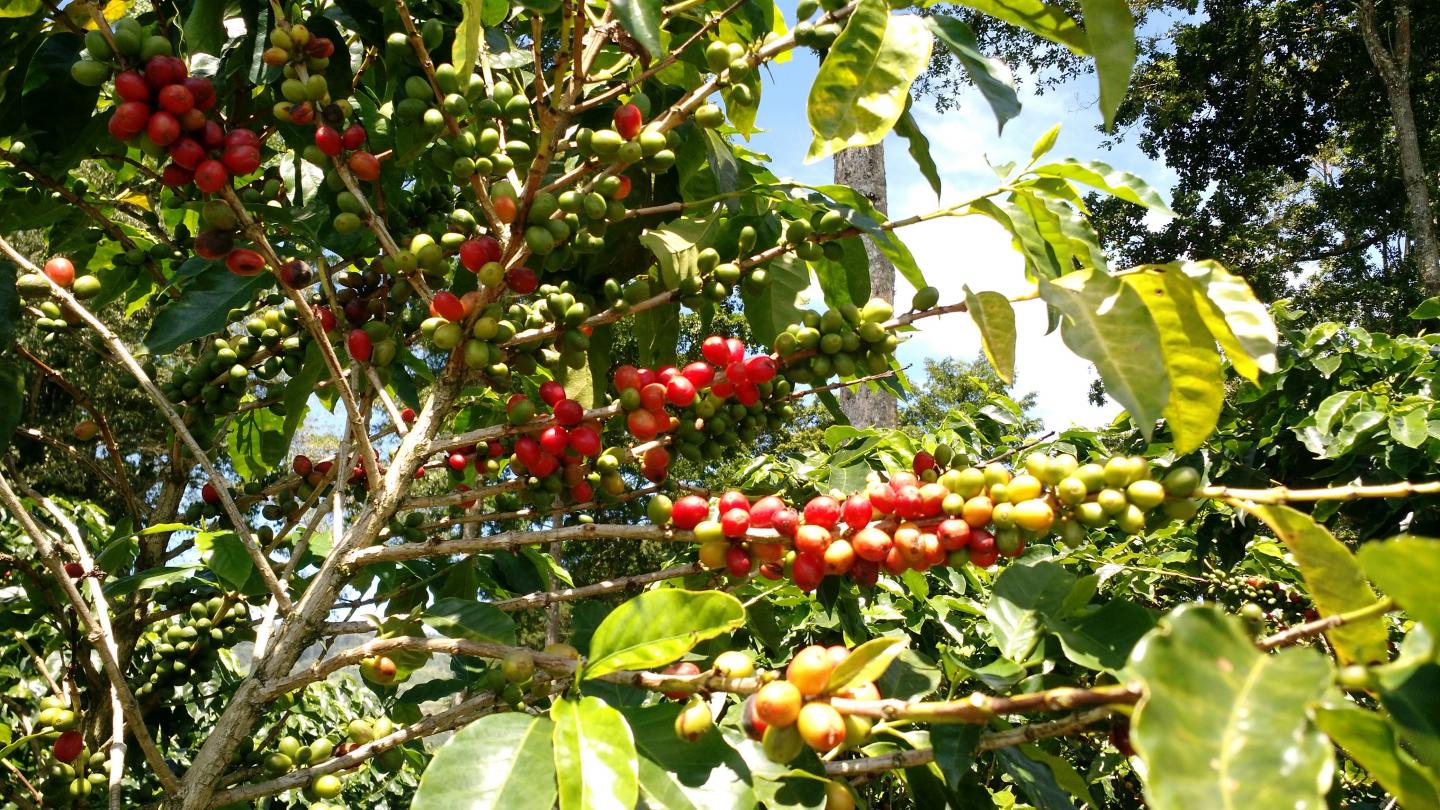
Credit: Bioversity International/K.DeSousa
Global demand for coffee and cocoa is on the rise. Yet across the equatorial belt where these two crops are produced, the future is not looking bright. Climate change in the tropics is pushing coffee and cocoa closer to the limits of physiological tolerance and constraining the places where they can grow in the future.
A new study examines future climate scenarios in Mesoamerica and how they could affect the distribution of these crops from Panama to Central Mexico. Coffee production, especially of Arabica coffee, will likely decrease as global warming and extreme weather events reduce the geographical areas where it grows best, and increase susceptibility to pest and disease outbreaks – coffee leaf rust affected 70% of the coffee farms in Central America in 2017. Cocoa may have a more positive future.
The study concludes that half of the current coffee plantations that are vulnerable to global warming in the future could be replaced by cocoa. “This opens a window of opportunity for climate change adaptation” highlights Kaue de Sousa, Research Fellow and leading author of the study. “The interest of smallholder farmers in cocoa is growing, driven by the vulnerability of coffee in the changing climate. Now we have to build capacity among smallholders to adapt their crop systems successfully” continues de Sousa.
Both crops are mostly grown under agroforestry management – where trees are incorporated into farming systems. “Coffee and cocoa are both traditionally grown under tree shade in order to reduce heat stress and conserve soil, but the shade trees are typically ignored in most future climate change studies”, says Roeland Kindt, Senior Ecologist at World Agroforestry. The agroforestry approach also brings additional ecosystem services, which make the production system more resilient, for example, by conserving water and providing habitats for birds and insects which can act as natural pest predators.
“Agroforestry systems are clear examples of how positive interactions between plants can ameliorate harsh growing conditions and facilitate agricultural productivity. Our study explores which tree species may be more successful in future coffee and cocoa plantations to create more benign microclimates” says Milena Holmgren, Expert on Ecosystem Resilience to Climate Variability, at Wageningen University.
When the researchers examined the top ten trees currently present in coffee and cocoa agroforestry systems, worryingly they identified that they are the ones most vulnerable to climate change. The authors found that the distribution range of almost 80% of tree species in coffee areas and 62% on cocoa areas will drastically shrink. These include tree species that are important for fruit (e.g. mango, guava and avocado) and timber (e.g. cedar), as well as an estimated 56% loss of nitrogen-fixing trees (e.g. poro and guama), which have the ability to enhance soil productivity and conservation. “Despite the concerning decrease in tree suitability, our study provides alternatives for coffee and cocoa agroforestry under the climate emergency faced by farmers today”, adds de Sousa.
Transforming agroforestry systems by changing tree species composition remains the best bet to adapt most of the coffee and cocoa farms across Mesoamerica, the study recommends. This would involve urgent changes to land use planning, incorporating diversified tree species and including underutilized species into redesigned agroforestry systems. The seed sector also needs to step up by offering farmers seeds and seedlings of the most suitable tree species for each climatic zone. Farmers also need to get on board.
“Farmers need to rethink current agroforestry species composition and use a portfolio that is suitable in the future climate. This is a challenging task, because it takes a long time for farmers to see their investments bearing fruit,” explains de Sousa. “We identified that this potential may rely on currently underutilized tree species, such as June plum, sapodilla and breadnut; species that are currently present in coffee and cocoa systems, but in low densities, as they are mainly remnants of previous farm vegetation rather than being actively planted and managed by farmers.”
Jenny Ordonez, Senior Author concludes: “This study is a very useful first step to improve the design of agroforestry systems as it shows a window of opportunities to maintain diversified agroforestry systems using underutilized species or novel combinations of species. It also opens new areas of research to promote the use of underutilized species which will maintain their suitability under climate change.”
###
Read the paper:
The future of coffee and cocoa agroforestry in a warmer Mesoamerica.
Authors: Kaue de Sousa, Maarten van Zonneveld, Milena Holmgren, Roeland Kindt and Jenny C. Ordonez.
http://www.
For more information:
Kaue de Sousa; Inland Norway University and Bioversity International, [email protected]
Milena Holmgren; Wageningen University, [email protected]
Roeland Kindt; World Agroforestry, [email protected]
For information on the BiodiversityR package used to ensemble suitability modelling visit: http://www.
This study was carried out in partnership with the Inland Norway University, Bioversity International, World Agroforestry and Wageningen University and Research.
This research is implemented as part of the CGIAR Research Program on Forests, Trees and Agroforestry (FTA) and the CGIAR Research Program on Climate Change, Agriculture and Food Security (CCAFS), and is supported by CGIAR Trust Fund donors (http://www.
Bioversity International, a CGIAR Research Centre, delivers scientific evidence, management practices and policy options to use and safeguard agricultural and tree biodiversity to attain sustainable global food and nutrition security.
http://www.
The Alliance of Bioversity International and the International Center for Tropical Agriculture (CIAT) delivers research-based solutions that harness agricultural biodiversity and sustainably transform food systems to improve people’s lives.
https:/
CGIAR is a global research partnership for a food-secure future. Its science is carried out by 15 Research Centres in close collaboration with hundreds of partners across the globe. http://www.
Media Contact
Kaue de Sousa
[email protected]
Related Journal Article
http://dx.




